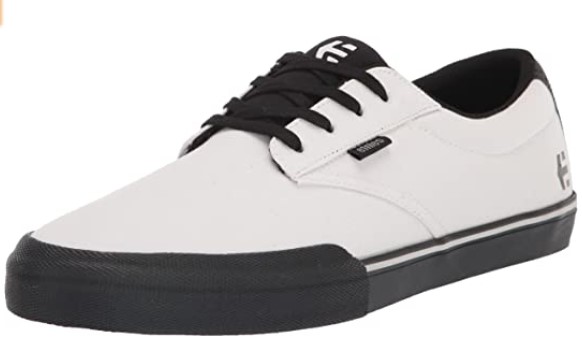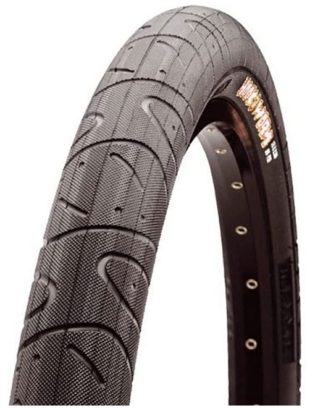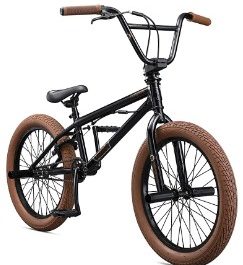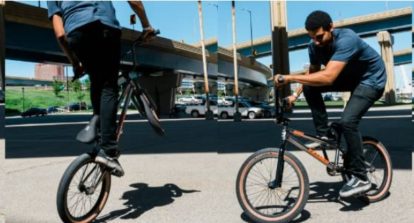Brakeless riding has become so common that it’s now the norm, not the exception. This change has caused a conversation shift from whether it’s possible to ride a BMX bike without brakes to, “Is it illegal to ride a BMX without brakes?”
Bike Laws in the U.S and the U.K, Europe, and the rest of the world prohibit brakeless riding on public roads. You at least need one brake (preferably rear brake) to ride on public roads. However, if you must ride a BMX without brakes, your only option is riding off-road.
You could get ticketed and face prosecution or fines for riding brakeless on public roads. But despite this, some people still ride brakeless, and you wonder why.
I’ll share why some riders, especially BMX pros, choose to ride brakeless. We’ll also discuss the pros and cons of brakeless BMXing and the various brakeless riding techniques to try out if you opt to go brakeless.
Read along!
Brakeless Riding and The Law – Is It Illegal to Ride A BMX Bike Without Brakes?
Generally, it’s illegal to ride a BMX bike without brakes on public roads.
Reason?
You need safety assurance when cycling on public roads, and one way for a bike to assure safety is by featuring brakes. In public BMXing, you need at least one brake, preferably the rear brake.
Penalty?
If found riding a BMX without brakes on public roads, you could get ticketed and even face prosecution for breaking the law. Note, however, that this doesn’t just apply to BMX but also other cycle types.
The Exception?
While riding a BMX brakeless on public roads is prohibited, you can do it off-road. No one will ticket you for doing stunts or racing off-road as there are fewer people, and so the risks are much lower.
Why Don’t Some BMX Bikes Have Brakes?
Given that it’s illegal to ride a BMX bike without brakes on public roads, you may wonder why some BMX bikes don’t some BMX bikes have them.
Well, that’s because the owners have taken them out. So, the brakes were there at one point, but they are no longer there.
But why? The owners remove brakes from their BMX bikes for these reasons:
- To save on weight – Brakes add some weight to the bike. So, by removing them, they make their BMX bikes lighter, hence more maneuverable.
- To create more clearance – The brake handles and cables can interfere with the bike maneuverability. Pro BMX riders choose to remove the brakes and their assembly to ensure enough clearance.
Should You Ride a BMX Brakeless (Though it Might Be Illegal)?
To answer this question, let’s look at the pros and cons of brakeless BMXing.
Pros of Brakeless BMXing
Here are the advantages that come with riding BMX bikes brakeless:
- Less Expensive Maintenance
For brakes to retain optimal performance, maintenance is necessary. With the absence of brakes, that cost no longer exists. Therefore, the maintenance regiment becomes more manageable and less expensive.
However, you could wipe out all those savings with one incident whose impact is minimizable by riding with your brakes in place.
- Enhanced Awareness and Commitment
Riders that have bikes with no brakes posit that they’re more aware of their surroundings and therefore able to react quicker in emergencies.
They also state that riding a brakeless BMX bike makes one commit to a stunt or trick. There’s no turning back once you set off for a jump or trick.
However, these are qualities that all riders need to have without necessarily having to ride brakeless.
- More Space for Execution of Stunts and Tricks
The primary reason riders want to go brakeless is due to the interference of the brake cables. However, you can eliminate cable interference using a Gyro/Detangler that allows the bars to spin without cables entangling.
- Enhanced Control
Alternative stopping options enhance bike control for those who ride without brakes.
The Cons of Riding a BMX Bike Without Brakes
Now, here are the downsides of riding brakeless:
- It’s Dangerous
Riding brakeless is just dangerous – both for you and others. While you may have gained the experience and skills to ride brakeless, emergencies occur when you least expect them.
With a set of brakes, you get the peace of mind resulting from a backup plan.
So, brakeless riding isn’t the way to go if you value your set of teeth, bones, or general well-being.
- Brakeless BMX Bike Stopping Techniques
Let’s face it. For the most daring or curious members of society, an article stating the dangers of brakeless riding isn’t much of a deterrent. They’ll still ride brakeless.
It’s also possible to have your brakes on and then lose them due to one reason or the other.
Therefore, it’s essential to answer this question; how does one stop when riding without brakes? Let’s talk about the brakeless techniques next.
How to Ride a BMX without Brakes (Brakeless Riding Techniques)?
Here are five techniques that can help.
1. Foot Jamming
To perform a foot jam, place your foot on the front wheel. Your foot will jam with the tire and the fork, bringing you to a stop.
Executing a foot jam requires caution, as one wrong move could see you flying over the handlebars.
A gentler alternative to the foot jam involves placing your foot on the rear wheel and letting the friction between your shoe and tire collaborate to help you stop.
You can practice this while you still have brakes. It could come in handy if you lose your brakes while riding.
Ensure that you have quality shoes to handle all the friction that will result from using the two techniques mentioned above. You could get flat pedal shoes with excellent grips, such as the Etnies Jameson BMX Shoe (Check on Amazon).
This shoe comes with a rubber sole and a midsole pedal shank for efficient pedal placement and grip. It also has a Sti foam insole that provides shock protection and spring capabilities.

2. Skateboard Technique
The skateboard technique is the most straightforward stopping trick when riding without brakes. You only have to drag your heels on the ground while straddling the bike. Then watch as friction works its magic to bring you to a stop soon enough.
However, please note that this technique works well at low speeds. You risk losing your balance if you’re carrying too much speed. The result could be a trip to the ER after hitting an obstacle or being dumped in a ditch.
3. Brakeless Drift
This option is best for those with more experience. It involves pinching your leg to the frame and moving your body sideways to flex the rear wheel to one side. The result is a skid that will aid in speed reduction.
Execute the skid several times in alternate directions, and you’ll eventually come to a stop.
4. Curb Skid
To execute a curb skid, ride parallel to the said curb and raise the handlebars to place the front wheel on the top part of the curb. Ensure the rear wheel doesn’t come to the top of the curb. Instead, let it skid against the curb, as that will help you stop.
Make sure that your tire’s sidewall construction can handle repeated curb skids. If unsure, consider getting the Maxxis Hookworm BMX Tire (Check on Amazon) with a bead-to-bead tread – a guaranteed performer for all your Freestyle riding needs, including brakeless riding.

BMX Brakes Maintenance Routine
Maintenance is vital as it helps your bike perform what it was made for, its identity. Here’s a simple routine to follow to maintain your rim brakes in top condition
- Check for loose and frayed brake cables
- Tighten or replace accordingly
- Regularly lube your brake cable housing to eliminate gunk and reduce friction between the cables and the plastic casing
- With regular lubing, your cables won’t rust and snap, and your fingers will love you for it as the levers will pull easier.
- Regularly check for worn-out brake pads
- Particular brake pads have indicator lines to show how much life they still have. If yours don’t have indicator lines, measure the remaining brake pad compound. The general rule of thumb is to replace anything less than 1.5mm thick.
- Check for misaligned brake pads, as they will significantly reduce your braking potential. You will know your brake pads are misaligned if one side wears faster than the other or has a groove on the pad surface.
- File down the grooved pad before centrally aligning both brake pads.
- Check for and remove any metal or stone debris on the brake pad.
People Also Ask
1. Why Do BMX Riders Ride with No Brakes?
Most Freestyle BMX riders prefer riding without brakes. The absence of brake cables eliminates interference and gives riders ample space while performing stunts and tricks.
Additionally, the absence of brakes marginally contributes to the overall reduction in the bike’s weight. The rider can perform specific tricks easily with reduced weight.
2. Can You Ride a Bike with No Brakes?
It is possible to ride a bike without brakes. Some professional BMX riders do it, and younger riders consider it a plus to their ‘street cred’ status.
However, this practice is highly discouraged as it is dangerous, especially for novice riders. And depending on where you live, it most likely is illegal to ride a bike without brakes, particularly on public roads.
3. Do BMX Riders Use Brakes?
The versatility of the BMX bike allows for riding with two, one, or no brakes at all. Your riding style, experience, and niche determine which options work. However, for BMX racing bikes, going brakeless is not an option. The rules require all race bikes to have brakes.
Professional riders usually have only rear brakes. This setup allows them to have less weight transfers to the front and therefore maintain balance better.
BMX bikes come with three distinct types of brakes; coaster brakes, V-brakes, and U-brakes.
You can also run your brakes in different combinations as follows:
- Both rear and front brakes present
- Only front brakes present
- Only rear brakes present
- No brakes present
4. Should I Go Brakeless on My BMX Bike?
Going brakeless seems to be all the rage in the BMX community currently. Caution is, however, advised – it is not for everyone.
You need to have gained some experience even to attempt such a feat. Otherwise, you risk severe injuries in case of an emergency.
Also, if you’re a young rider whose parents are safety-conscious, going brakeless is something that they might not sanction.
However, if you’re set on your ways and still feel you want to go brakeless, ensure that you learn alternative stopping techniques.
Remember that it will take some time for you to stop instinctively going for the brakes whenever you need to stop.
Relevant:
In Conclusion – Is It Illegal to Ride a BMX Without Brakes?
True, riding a BMX bike without brakes presently seems fashionable. However, in most places, riding a BMX bike, or any other bicycle, without brakes on public roads is illegal.
You’re only free to ride brakeless while off-road. And if you do ride without brakes, please wear a helmet. You’ll need it!


